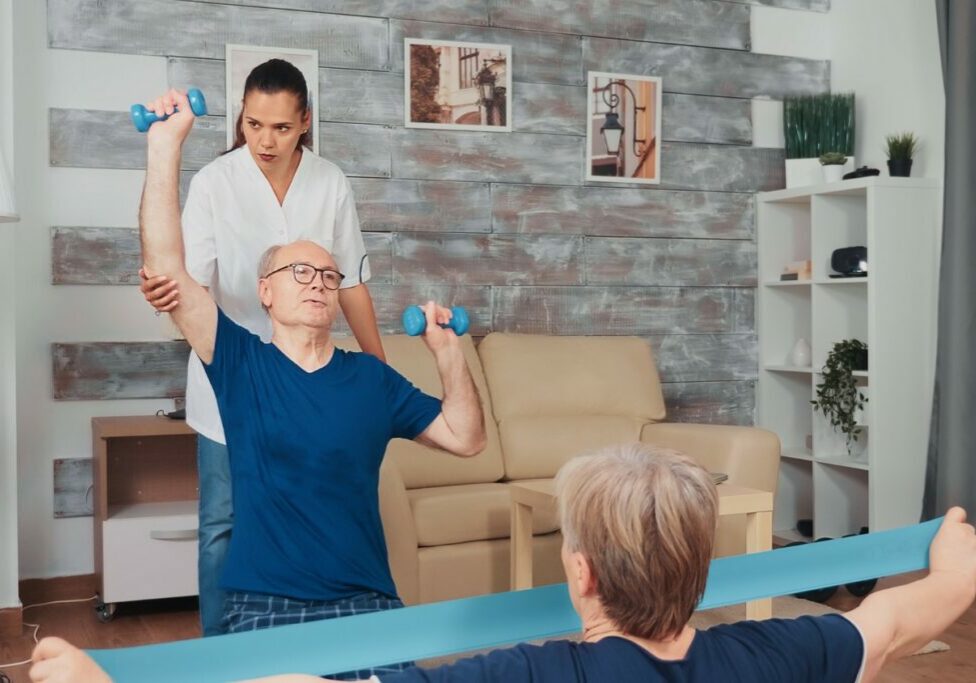Osteoporosis, osteopenia and osteoarthritis – which is which?
There are many medical terms that start with “osteo-” (including osteopathy!), so it can be hard to remember the differences between them all.
Osteoporosis occurs when a person has low bone mineral density. This happens because your bones are losing calcium at a rate faster than your body can replace it, making your bones more fragile and susceptible to breaking. Osteopenia is a decrease in bone mineral density below normal, but not yet low enough to be classified as osteoporosis. Osteoporosis and osteopenia are diagnosed via a DEXA scan (Dual Energy X-Ray Absorptiometry). The score from the scan will determine which one you have (or neither).
Osteoarthritis on the other hand involves the degeneration of cartilage over time which can then include bone and joint surfaces. This often results in joint pain and loss of function. It is possible to have both osteoporosis and osteoarthritis or osteopenia at the same time.
Fractures and osteoporosis
Fractures are the biggest concern when it comes to osteoporosis. In women, fractures of the hip and spine are the most common. Prevention of osteoporosis is important as it can lead to fractures. In fact, over 50% of white postmenopausal women will experience an osteoporosis-related fracture! It is important to avoid fractures as especially in the older population, they are associated with loss of quality of life, independence, mortality and morbidity.
Who is at risk?
Postmenopausal women are most at risk for getting osteoporosis. It doesn’t just affect women though, men can also get osteoporosis, with other risk factors including smoking, low calcium and vitamin D, physical inactivity, low BMI and certain medical conditions such as coeliac and Inflammatory Bowel Disease. There is also a risk of developing osteoporosis with the use of certain medications, such as glucocorticoids and anti-epileptics.
What can I do about it?
Prevention of osteoporosis starts young. Weight bearing physical activity and exercise are a great way to help prevent and treat osteoporosis. Practices such as yoga and tai chi are fantastic for this. If these activities aren’t for you, walking and running are also great ways to engage in weight bearing exercise. Once you are comfortable with weight bearing, adding in some resistance training with weights is a great way to step up your exercise. Finally, especially as we age, it’s important to do balance training. This is helpful in the prevention of falls which can lead to fractures.
It is also important to ensure your calcium and vitamin D levels are optimal. This can be achieved through both dietary and lifestyle changes and supplementation if necessary.
Foods that are high in calcium include;
- Dairy products such as milk, cheese and yoghurt
- Seafood such as trout, salmon or canned sardines
- Vegetables such as broccoli, kale and book choy
- Nuts such as almonds, hazelnuts and walnuts
As you age, your body decreases in ability to absorb calcium, so it is important to ensure you are getting enough. Adults need about 1000mg of calcium per day, whereas women over 50 and men over 70 need 1300mg!
Vitamin D is important because it helps your body absorb the calcium you’re consuming. Your main source of Vitamin D is through the sun, but ensure your exposure is balanced with skin protection and supplement may be required, especially during the winter months.
For other forms of treatment, there are different types of medications that can help prevent fractures, especially in severe osteoporosis. Your doctor will speak to you about which medication may be right for you.
Top Take Away Tips
- Weight bearing exercise such as yoga, tai chi and walking, alongside resistance and balance training are great at preventing osteoporosis and fractures
- Keep up those Calcium and Vitamin D levels for strong bones
- Lifestyle changes, such as reducing smoking and alcohol intake, can help lower your likelihood of developing osteoporosis.


